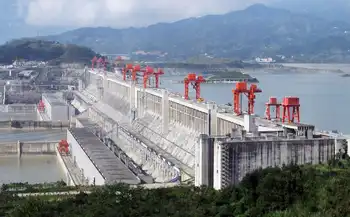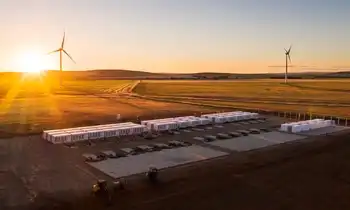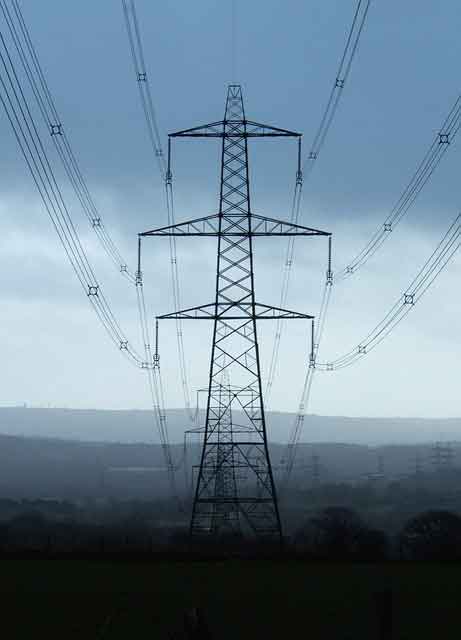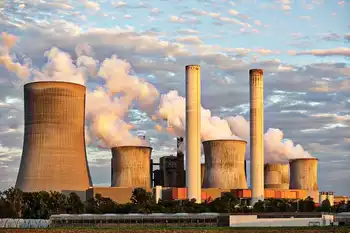Fears that giant Collider may create a black hole
By New York Times
CSA Z463 Electrical Maintenance
Our customized live online or in‑person group training can be delivered to your staff at your location.

- Live Online
- 6 hours Instructor-led
- Group Training Available
Scientists say that is very unlikely — though they have done some checking just to make sure.
The worldÂ’s physicists have spent 14 years and $8 billion building the Large Hadron Collider, in which the colliding protons will recreate energies and conditions last seen a trillionth of a second after the Big Bang. Researchers will sift the debris from these primordial recreations for clues to the nature of mass and new forces and symmetries of nature.
But Walter L. Wagner and Luis Sancho contend that scientists at the European Center for Nuclear Research, or CERN, have played down the chances that the collider could produce, among other horrors, a tiny black hole, which, they say, could eat the Earth. Or it could spit out something called a “strangelet” that would convert our planet to a shrunken dense dead lump of something called “strange matter.” Their suit also says CERN has failed to provide an environmental impact statement as required under the National Environmental Policy Act.
Although it sounds bizarre, the case touches on a serious issue that has bothered scholars and scientists in recent years — namely how to estimate the risk of new groundbreaking experiments and who gets to decide whether or not to go ahead.
The lawsuit, filed March 21 in Federal District Court, in Honolulu, seeks a temporary restraining order prohibiting CERN from proceeding with the accelerator until it has produced a safety report and an environmental assessment. It names the federal Department of Energy, the Fermi National Accelerator Laboratory, the National Science Foundation and CERN as defendants.
According to a spokesman for the Justice Department, which is representing the Department of Energy, a scheduling meeting has been set for June 16.
Why should CERN, an organization of European nations based in Switzerland, even show up in a Hawaiian courtroom?
In an interview, Mr. Wagner said, “I don’t know if they’re going to show up.” CERN would have to voluntarily submit to the court’s jurisdiction, he said, adding that he and Mr. Sancho could have sued in France or Switzerland, but to save expenses they had added CERN to the docket here. He claimed that a restraining order on Fermilab and the Energy Department, which helps to supply and maintain the accelerator’s massive superconducting magnets, would shut down the project anyway.
James Gillies, head of communications at CERN, said the laboratory as of yet had no comment on the suit. “It’s hard to see how a district court in Hawaii has jurisdiction over an intergovernmental organization in Europe,” Mr. Gillies said.
“There is nothing new to suggest that the L.H.C. is unsafe,” he said, adding that its safety had been confirmed by two reports, with a third on the way, and would be the subject of a discussion during an open house at the lab on April 6.
“Scientifically, we’re not hiding away,” he said.
But Mr. Wagner is not mollified. “They’ve got a lot of propaganda saying it’s safe,” he said in an interview, “but basically it’s propaganda.”
In an e-mail message, Mr. Wagner called the CERN safety review “fundamentally flawed” and said it had been initiated too late. The review process violates the European Commission’s standards for adhering to the “Precautionary Principle,” he wrote, “and has not been done by ‘arms length’ scientists.”
Physicists in and out of CERN say a variety of studies, including an official CERN report in 2003, have concluded there is no problem. But just to be sure, last year the anonymous Safety Assessment Group was set up to do the review again.
“The possibility that a black hole eats up the Earth is too serious a threat to leave it as a matter of argument among crackpots,” said Michelangelo Mangano, a CERN theorist who said he was part of the group. The others prefer to remain anonymous, Mr. Mangano said, for various reasons. Their report was due in January.
This is not the first time around for Mr. Wagner. He filed similar suits in 1999 and 2000 to prevent the Brookhaven National Laboratory from operating the Relativistic Heavy Ion Collider. That suit was dismissed in 2001. The collider, which smashes together gold ions in the hopes of creating what is called a “quark-gluon plasma,” has been operating without incident since 2000.
Mr. Wagner, who lives on the Big Island of Hawaii, studied physics and did cosmic ray research at the University of California, Berkeley, and received a doctorate in law from what is now known as the University of Northern California in Sacramento. He subsequently worked as a radiation safety officer for the Veterans Administration.
Mr. Sancho, who describes himself as an author and researcher on time theory, lives in Spain, probably in Barcelona, Mr. Wagner said.
Doomsday fears have a long, if not distinguished, pedigree in the history of physics. At Los Alamos before the first nuclear bomb was tested, Emil Konopinski was given the job of calculating whether or not the explosion would set the atmosphere on fire.
The Large Hadron Collider is designed to fire up protons to energies of seven trillion electron volts before banging them together. Nothing, indeed, will happen in the CERN collider that does not happen 100,000 times a day from cosmic rays in the atmosphere, said Nima Arkani-Hamed, a particle theorist at the Institute for Advanced Study in Princeton.
What is different, physicists admit, is that the fragments from cosmic rays will go shooting harmlessly through the Earth at nearly the speed of light, but anything created when the beams meet head-on in the collider will be born at rest relative to the laboratory and so will stick around and thus could create havoc.
The new worries are about black holes, which, according to some variants of string theory, could appear at the collider. That possibility, though a long shot, has been widely ballyhooed in many papers and popular articles in the last few years, but would they be dangerous?
According to a paper by the cosmologist Stephen Hawking in 1974, they would rapidly evaporate in a poof of radiation and elementary particles, and thus pose no threat. No one, though, has seen a black hole evaporate.
As a result, Mr. Wagner and Mr. Sancho contend in their complaint, black holes could really be stable, and a micro black hole created by the collider could grow, eventually swallowing the Earth.
But William Unruh, of the University of British Columbia, whose paper exploring the limits of Dr. Hawking’s radiation process was referenced on Mr. Wagner’s Web site, said they had missed his point. “Maybe physics really is so weird as to not have black holes evaporate,” he said. “But it would really, really have to be weird.”
Lisa Randall, a Harvard physicist whose work helped fuel the speculation about black holes at the collider, pointed out in a paper last year that black holes would probably not be produced at the collider after all, although other effects of so-called quantum gravity might appear.
As part of the safety assessment report, Dr. Mangano and Steve Giddings of the University of California, Santa Barbara, have been working intensely for the last few months on a paper exploring all the possibilities of these fearsome black holes. They think there are no problems but are reluctant to talk about their findings until they have been peer reviewed, Dr. Mangano said.
Dr. Arkani-Hamed said concerning worries about the death of the Earth or universe, “Neither has any merit.” He pointed out that because of the dice-throwing nature of quantum physics, there was some probability of almost anything happening. There is some minuscule probability, he said, “the Large Hadron Collider might make dragons that might eat us up.”















